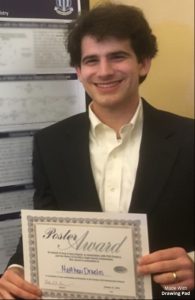We contributed two reviews to the latest edition of the Comprehensive Natural Products III. The first review entitled “Biosynthesis and Mode of Action of Antifungal Pepetidyl Nucleoside Natural Products” was written with Mathew as the first author and comprehensively summarized the current state of our understanding in the mode of action and biosynthesis of antifungal peptidyl nucleosides (PNs). PNs are represented by nikkomycins and polyoxins that have been used as agricultural fungicides or investigated as novel antifungals against invasive fungal infections. In the past ~15 years, there have been a significant advancement in our understanding of their biosynthesis, which could facilitate the future development of these compounds into clinically useful drugs.
The second review entitled “Radical-Mediated Carbon Skeleton Formation in Natural Products and Cofactor Biosynthesis” summarizes an emerging group of radical SAM enzymes that catalyze carbon skeleton formations in natural products and cofactor biosynthesis with particular focus on the mechanism of radical quenching. These enzymes play key roles in their biosynthetic pathways, and thus their functional and mechanistic characterizations are critical for the understanding of the pathways. The review highlights the as yet poorly understood mechanisms of radical quenching that provide diversity in their reactivities.









